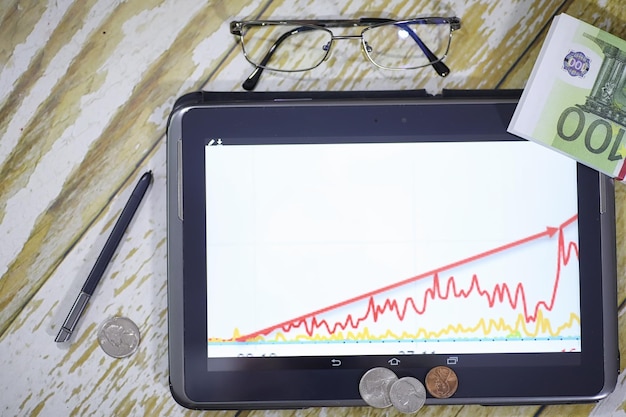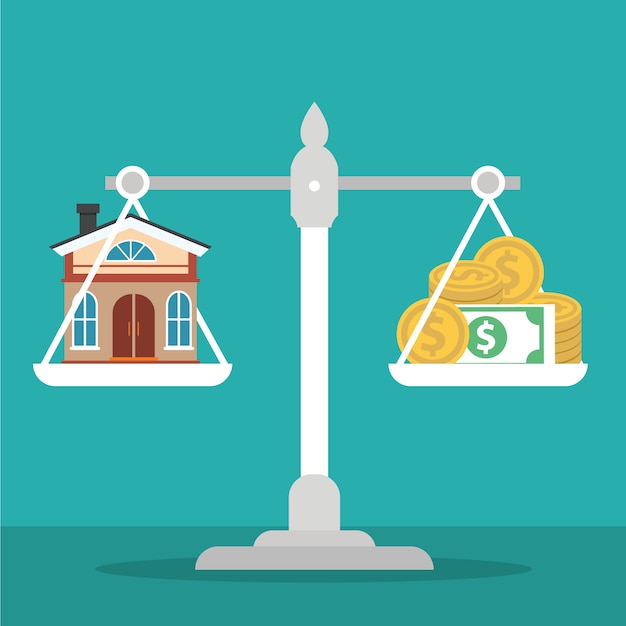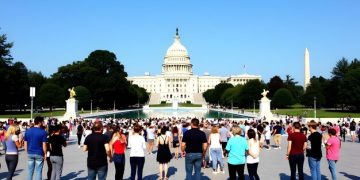Updated: Latest Federal Efforts to Combat US Inflation

The US government is employing various strategies, including monetary policy adjustments by the Federal Reserve and fiscal measures, to combat persistent inflation affecting the nation.
The US economy has been grappling with inflation for quite some time, prompting the federal government to take action. Here’s an updated look at the latest on federal efforts to combat inflation in the US and what these actions mean for you.
Understanding the Inflation Landscape
Before diving into the specifics of federal efforts, it’s critical to understand the current inflation landscape. Inflation refers to the rate at which the general level of prices for goods and services is rising, and subsequently, purchasing power is falling. Understanding the factors contributing to inflation helps in assessing the appropriateness and effectiveness of the measures taken to combat it.
What Causes Inflation?
Inflation can be driven by several factors, often categorized as demand-pull inflation or cost-push inflation. Demand-pull inflation occurs when there is an increase in aggregate demand that outpaces the economy’s ability to produce goods and services. Cost-push inflation, on the other hand, arises when the costs of production, such as wages and raw materials, increase, leading businesses to raise prices.
- Increased Demand: Higher consumer spending due to factors like stimulus checks or pent-up demand after a recession.
- Supply Chain Disruptions: Bottlenecks and delays in the supply of goods, leading to shortages and higher prices.
- Rising Labor Costs: Increased wages and benefits pressures, compelling businesses to raise prices to maintain profitability.
- Global Events: Geopolitical tensions or events that disrupt global trade and supply chains can significantly impact inflation levels.

Currently, the US is experiencing a combination of these factors, making the fight against inflation particularly challenging. The federal government is employing a range of strategies to address these underlying causes and stabilize prices.
The Federal Reserve’s Role in Managing Inflation
The Federal Reserve (Fed) plays a crucial role in managing inflation through monetary policy. The Fed’s primary tool is adjusting the federal funds rate, which influences interest rates throughout the economy. By raising interest rates, the Fed aims to cool down the economy, reduce demand, and ultimately lower inflation.
Interest Rate Hikes
The Fed has been aggressively raising interest rates to combat inflation. These rate hikes increase the cost of borrowing for consumers and businesses, leading to reduced spending and investment. The goal is to slow down economic growth and bring inflation back to the Fed’s target of 2%.
Quantitative Tightening
In addition to raising interest rates, the Fed is also engaging in quantitative tightening (QT). QT involves reducing the Fed’s balance sheet by allowing Treasury securities and agency mortgage-backed securities to mature without reinvesting them. This process reduces the amount of money circulating in the economy, further tightening financial conditions.
- Impact on Mortgage Rates: Higher interest rates translate to higher mortgage rates, cooling down the housing market.
- Effects on Business Investment: Increased borrowing costs make businesses more cautious about investing in new projects.
- Consumer Spending: Higher interest rates can dampen consumer spending on big-ticket items like cars and appliances.
The Fed’s actions are aimed at achieving a delicate balance: slowing down the economy enough to curb inflation without triggering a recession. This requires careful communication and data-driven decision-making.
Fiscal Policy Measures to Curb Inflation
While the Federal Reserve tackles inflation through monetary policy, the federal government also employs fiscal policy measures. These measures involve government spending and taxation policies aimed at influencing the overall economy.

Government Spending
Controlling government spending is one way to reduce inflationary pressures. When the government spends less, it decreases overall demand in the economy, which can help bring down prices. However, cutting spending can be politically challenging, as it may involve reducing funding for popular programs.
Taxation Policies
Adjusting taxation policies is another tool the government can use. Increasing taxes can reduce disposable income, thereby curbing consumer spending and demand. Conversely, tax cuts can stimulate spending, potentially leading to higher inflation if the economy is already running hot.
- Supply-Side Policies: Policies aimed at increasing the economy’s productive capacity, such as investments in infrastructure or education, can help alleviate supply constraints and reduce cost-push inflation.
- Fiscal Responsibility: Maintaining a balanced budget and reducing the national debt can help stabilize the economy and prevent future inflationary pressures.
- Targeted Relief Measures: Providing targeted support to vulnerable populations affected by inflation can help mitigate the negative impacts without fueling further price increases.
Fiscal policy measures are often implemented in coordination with monetary policy to achieve the desired economic outcomes. The effectiveness of these measures depends on various factors, including the overall state of the economy and the specific details of the policies.
Supply Chain Improvements and Deregulation
Addressing supply chain bottlenecks and implementing deregulation measures can also play a role in combating inflation. Supply chain disruptions have been a major contributor to rising prices, and efforts to improve efficiency and reduce constraints can help alleviate these pressures.
Easing Supply Chain Bottlenecks
The government has been working to ease supply chain bottlenecks by addressing port congestion, improving transportation infrastructure, and promoting domestic manufacturing. These efforts aim to increase the availability of goods and reduce delays, thereby lowering prices.
Deregulation
Reducing regulatory burdens on businesses can also help lower costs and increase competition, leading to lower prices for consumers. Deregulation can involve streamlining permitting processes, reducing compliance requirements, and promoting innovation.
- Port Modernization: Investing in port infrastructure and technology to improve efficiency and reduce congestion.
- Transportation Improvements: Upgrading roads, railways, and other transportation networks to facilitate the smooth flow of goods.
- Support for Domestic Manufacturing: Incentivizing companies to produce goods domestically, reducing reliance on foreign supply chains.
By addressing supply chain issues and reducing regulatory burdens, the federal government can help foster a more competitive and efficient economy, contributing to lower inflation.
The Impact on Consumers and Businesses
The federal government’s efforts to combat inflation have significant impacts on consumers and businesses. Higher interest rates, reduced government spending, and other measures can affect everything from the cost of borrowing to job creation.
Impact on Consumers
Consumers may experience higher borrowing costs for mortgages, car loans, and credit cards. Reduced government spending could also lead to cuts in social programs, affecting vulnerable populations. However, lower inflation can ease the burden on household budgets and increase purchasing power.
Impact on Businesses
Businesses may face higher borrowing costs, which can reduce investment in new projects and expansions. Deregulation and supply chain improvements can help lower costs and increase profitability. A stable economic environment with low inflation is generally conducive to long-term business growth.
- Cost of Living: Lower inflation can help stabilize the cost of living, making it easier for families to afford essential goods and services.
- Job Market: The effects of anti-inflation measures on the job market can be mixed, with some sectors potentially experiencing job losses while others benefit from increased stability.
- Retirement Savings: High inflation can erode the value of retirement savings, making it more challenging for individuals to achieve their financial goals.
The government’s policies aim to strike a balance between curbing inflation and promoting sustainable economic growth, benefiting both consumers and businesses in the long run.
Future Outlook: Challenges and Potential Outcomes
The future outlook for inflation and the effectiveness of federal efforts to combat it remain uncertain. Several challenges and potential outcomes could shape the economic landscape in the coming years.
Challenges
Persistent supply chain disruptions, geopolitical tensions, and unexpected economic shocks could continue to fuel inflation. The Fed’s efforts to raise interest rates may also trigger a recession if not carefully managed. Balancing the need to curb inflation with the desire to maintain economic growth is a delicate balancing act.
Potential Outcomes
If the government’s policies are successful, inflation could gradually return to the Fed’s target of 2%, leading to a more stable and predictable economic environment. However, there is also the risk that inflation could remain stubbornly high, requiring further intervention. The long-term effects of the government’s actions will depend on various factors, including global economic conditions and unforeseen events.
- Technological Innovations: Technological advancements could help boost productivity and alleviate supply constraints, contributing to lower inflation.
- Global Cooperation: International cooperation on trade and supply chains could help stabilize prices and reduce the risk of inflationary shocks.
- Policy Adjustments: The government may need to adjust its policies in response to changing economic conditions, ensuring that efforts to combat inflation remain effective.
The coming years will be critical in determining whether the federal government’s efforts to combat inflation are successful. Staying informed about economic trends and policy developments is essential for navigating the challenges and opportunities that lie ahead.
| Key Point | Brief Description |
|---|---|
| 💰 Interest Rate Hikes | The Federal Reserve is raising interest rates to cool down the economy. |
| 📉 Quantitative Tightening | The Fed is reducing its balance sheet to tighten financial conditions. |
| 🚚 Supply Chain Improvements | Efforts are being made to ease bottlenecks and improve supply chain efficiency. |
| 🏛️ Fiscal Policies | Government spending and taxation policies are being adjusted to curb inflation. |
Frequently Asked Questions
▼
The primary goal of the Federal Reserve is to bring inflation back to its target of 2%. This is achieved through monetary policy tools like adjusting the federal funds rate and quantitative tightening.
▼
Interest rate hikes increase the cost of borrowing for consumers, leading to higher mortgage rates, car loan payments, and credit card interest. This can reduce consumer spending on big-ticket items.
▼
Fiscal policy measures include controlling government spending, adjusting taxation policies, and implementing supply-side policies. These measures aim to influence overall demand and supply in the economy.
▼
Addressing supply chain bottlenecks and improving efficiency can increase the availability of goods and reduce delays, thereby lowering prices and alleviating inflationary pressures.
▼
Challenges include persistent supply chain disruptions, geopolitical tensions, and the risk of triggering a recession through aggressive interest rate hikes. Balancing inflation control with economic growth is key.
Conclusion
The fight against inflation in the US involves a multifaceted approach, combining monetary policy from the Federal Reserve and fiscal measures from the government. While the path forward presents challenges, staying informed and adapting to economic changes will be crucial in achieving a stable and prosperous future.





